Author: Resident Evil Rebirth, Sina Weibo @Nanshan Lin Xueping, various software official websites | Source: Observer Network
-
The overall development level and strength of Canada’s basic and industrial software are inferior to that of the United States, France, and Germany, yet its development strength and software coverage in industrial fields far exceed many other countries with larger populations than Canada. -
The vast majority of Canada’s basic and industrial software are globally pioneering in their fields, with early development times and a very famous innovation system. -
Some of Canada’s basic and industrial software are derived from foundational research in Canada and also contribute back to foundational research globally.
CorelDRAW is a world-renowned vector graphic design software developed by Corel Corporation in Canada (headquartered in Ottawa). This software was first developed in 1988 and is one of the earliest large-scale vector graphic design software on the Windows platform, pioneering this software field. The software has a history of 30 years and is widely used in publishing and printing, such as for brochures, color pages, and manual designs, as well as in the fashion design industry. It also has extensive applications in China and is probably the most famous Canadian software in China.
Although this vector graphic software is globally pioneering in Canada, compared to other Canadian basic and industrial software, it is at an elementary school level, as this software is characterized by simplicity, flexibility, ease of use, and high efficiency.
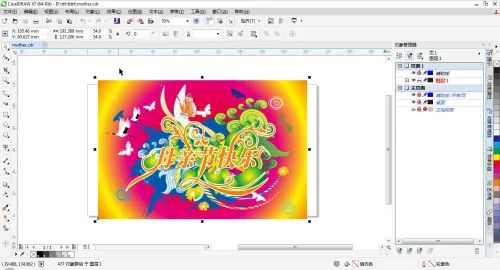
Houdini combines innovations from Canada in foundational research, integrating extensive mathematical and physical knowledge, including but not limited to finite elements, fuzzy logic, computational geometry, KD-trees, clustering, genetic algorithms, numerical analysis, FFT, and fluid mechanics. Houdini comes with a high-performance programming language VEX and supports Python, its capabilities have far exceeded the scope of animation and special effects.
This software is also essential for the American and global film industries, used for developing the most complex effects in numerous films, such as “Avatar.” It is gradually expanding its application range into large-scale game development and research fields, such as data processing at the National Center for Supercomputing Applications (NCSA) at the University of Illinois. As development progresses, Houdini is expected to play a more significant role in foundational research.
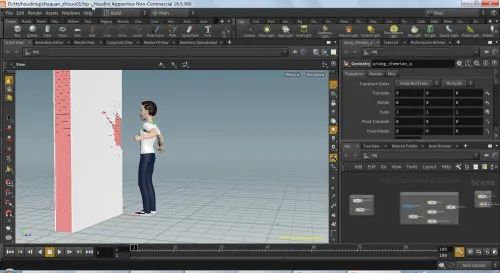
Maple
Maple is a mathematical and engineering computing software developed by the University of Waterloo in Canada, first developed in 1980. It represents the largest innovation in large-scale mathematical software in Canada and is one of the three major mathematical and engineering computing software in the world, the other two being Mathematica and MATLAB (both from the United States). These three specialized mathematical software are widely used in universities and industrial fields around the world, making Maple a foundational software and foundational research software in Canada. The Maple system has advanced technology to solve mathematical problems in modeling and simulation, including symbolic computation, arbitrary precision numerical computation, a powerful Maple language, and industrial field extensions. Among these, the symbolic computation engine is the most powerful.
Maple has over 5000 symbolic and numerical computation commands, covering almost all areas of mathematics, such as calculus, linear algebra, equation solving, integration and discrete transforms, probability theory and mathematical statistics, graph theory, tensor analysis, differential and analytical geometry, financial mathematics, matrix computation, linear programming, combinatorial mathematics, vector analysis, abstract algebra, functional analysis, number theory, complex analysis and real analysis, abstract algebra, series and integral transforms, special functions, coding and cryptography theory, optimization, etc.
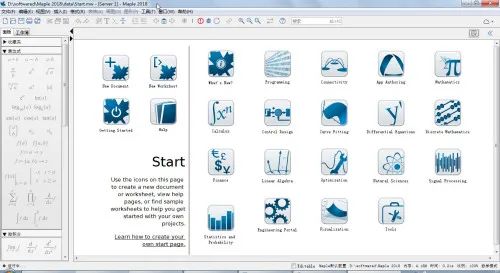
MapleSim
MapleSim is also developed by the University of Waterloo in Canada and can significantly shorten model development time using modern technology, allowing for a deeper understanding of system behavior and fast, high-fidelity simulation. It is an advanced physical modeling and simulation tool, with unique features in robot development simulation, already used in the robotics department at the University of Manchester in the UK, and applied in many countries, such as in the Shanghai Maglev project.
Includes global optimization toolbox, grid computing toolbox, control design toolbox, tire library, transmission system library, heat conduction library, hydraulic library, pneumatic library, battery library, used for design and development in aircraft, automobiles, rail transit, robots, etc.

Presagis
Presagis is a subsidiary of CAE Inc. in Canada (headquartered in Quebec), which is the world’s largest manufacturer of full-motion flight simulators and has extensive applications in the global pilot training field. Presagis is a professional technology company providing modeling, simulation, and embedded display graphics products and solutions for users in aviation, military, and automotive fields, dedicated to providing integrated solutions that meet complex application needs. It has over 1000 users in more than 60 countries, including many military and industrial giants such as Boeing, Airbus, and Lockheed Martin.
Product modules and functions:
Battlefield Simulation – STAGE
3D Visualization – Vega Prime, Creator, Terra Vista
HMI Development – VAPS -XT
Flight Simulation – FlightSim, HeliSim
FlightSim is a high-precision standard flight simulation platform, capable of simulating various dynamic characteristics of fixed-wing aircraft. It provides a complete aircraft simulation framework, allowing users to add their own simulation functions and models, integrating flight dynamics, engines, instruments, navigation, load, manipulation, and other systems, and can simulate various fault states.
Radar Simulation – Ondulus Radar
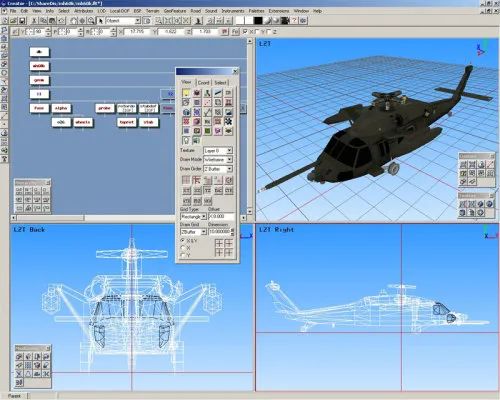
Infolytica Low Frequency Electromagnetic Field Simulation
Infolytica is headquartered in Montreal, Canada. As a founder and leader of many new technologies in electromagnetic software, Infolytica has been dedicated to technical research and development in the field of electromagnetic field finite element analysis, aiming to provide complete solutions for electromagnetic design engineers. Infolytica software has become the preferred software for low-frequency electromagnetic analysis worldwide, continuously providing complex magnetic field, electric field, and thermal field problem-solving solutions for industries such as aerospace, automotive, durable goods, power, medical devices, electronic products, and research education.
The Infolytica product series mainly includes MagNet, ElecNet, ThermNet, OptiNet, MotorSolve, MagNet for Solidworks, etc., allowing for independent and coupled analysis of 2D and 3D electric fields, magnetic fields, and thermal fields in the same interface.
Typical applications include:
Various motors, generators, transformers, high-voltage switches, permanent magnets and electromagnets, electromagnetic brakes, superconductors, coils and magnetic sensors, speakers, induction heating, insulation sleeves, CRT cathode ray tubes, eddy current non-destructive testing (NDT).
Below is the software interface of one of the Infolytica modules:
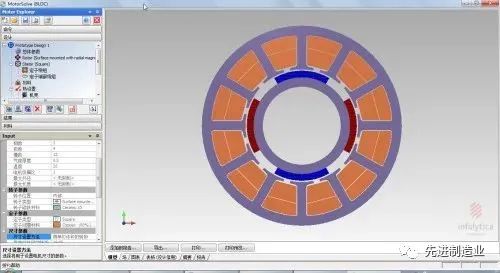
Canada is the sixth largest power-generating country in the world, with total power generation ranking far above its GDP ranking and population ranking, which hides Canada’s continuous and significant innovations in power industry software.
Below is the power generation of Canada:
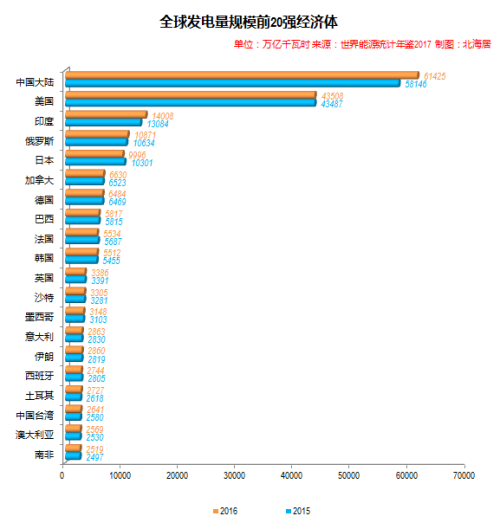
The power system software developed in Canada offers the most comprehensive solutions in the world, including distribution network simulation software CYME, grounding simulation software CDEGS, electromagnetic transient simulation software PSCAD, large-scale power grid simulation software DSA-Tools, etc. These high-end power software are also highly regarded in academia.
CYME
Developed by CYME Company located in Quebec, Canada. CYME provides a wide range of power engineering software, including some of the most advanced analysis tools for transmission, distribution, and industrial power systems.
This is a very complex power industry software developed in Canada, including up to dozens of modules.
CYME is applied to distribution network/system analysis:
Distribution analysis (CYMDIST), advanced project management, automated network forecasting analysis, steady-state analysis of load curves, distribution state estimation, reliability assessment, techno-economic analysis, transient stability, harmonics, long-term power analysis, integration capacity analysis, EPRI DRIVE, DER impact assessment, network disturbance assessment DA-CH-CZ, distance protection analysis, voltage/VAr optimization, optimal voltage regulator placement, optimal recloser placement, arc flash hazard, motor starting, load flow randomization (Np), protection device coordination, network configuration optimization, emergency assessment and recovery, enhanced substation modeling, secondary grid analysis, low voltage secondary distribution modeling, geographic overlay, online maps.
CYME is applied to transmission and industrial network/system analysis:
Network editor, current, fault analysis, load flow randomization (Np), arc flash hazard, DC arc flash hazard analysis, low voltage cable sizing, protection device coordination, motor starting, harmonics, DC load flow and short-circuit analysis, transient stability, voltage stability, optimal power flow, techno-economic analysis.
CYMCAP Cable Current Carrying Capacity Calculation:
Current carrying capacity calculation (CYMCAP), multiple conduits, cables in tunnels, low valley cables, conduit group optimization tools, magnetic field, cable impedance calculation, short-circuit cable ratings, cable crossings, cable historical working temperature estimation (CHOTE).
For over 20 years, CYME software has been applied in thousands of transmission, distribution, and industrial projects worldwide.
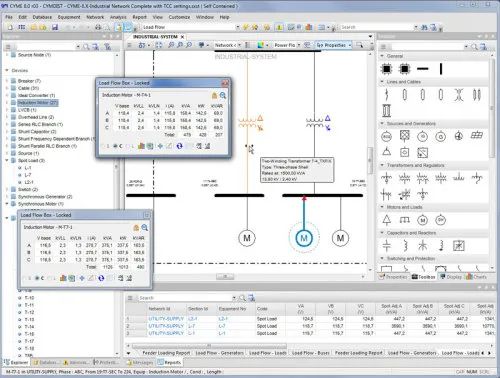
CYME is used by power companies, research institutions, and universities in various countries around the world. According to its official website, some of CYME’s clients in China include: China Electric Power Research Institute, East China Electric Power Test Research Institute, Guangzhou University, Tianjin University, Yunnan Electric Power Test Research Institute, Hong Kong University, etc.
CDEGS
CDEGS grounding analysis software developed by SES Company in Canada can calculate the parameters of any layered soil and any shape ground grid.
The CDEGS software was developed by SES Company in Quebec, Canada, over more than a decade. CDEGS is an abbreviation for Current Distribution, Electromagnetic Fields, Grounding, and Soil Structure Analysis, and it is a powerful tool software to solve engineering problems related to grounding, electromagnetic fields, and electromagnetic interference in power systems, and can also solve issues related to cathodic protection. It can calculate the grounding potential, wire potential, and electromagnetic fields generated by a mesh structure of charged wires at any location above or below ground under normal, fault, lightning, and transient conditions. CDEGS can also establish computational models for simple, exposed, and insulated metal pipes, closed pipelines, cable systems, and complex soil structures.
The software includes:
CDEGS, analysis of grounding, electromagnetic fields, and electromagnetic interference; AutoGround, for grounding system analysis in two-layer horizontal soil structures; MultiGround, grounding analysis and conductive coupling studies; MultiFields, analysis of complex electromagnetic field problems containing conductor networks; MultiLines, calculation of parameters for any complex arrangement of conductors; Right-of-Way, electromagnetic interference analysis between power lines and nearby equipment; AutoGridPro, for basic research.
AutoGroundDesign can automatically analyze grounding systems composed of regular shapes and exposed conductors; SESEnviroPlus, overhead AC and DC transmission line design; SESTLC, rapid line parameter calculation for transmission and distribution lines; SESShield-3D, analysis of transmission lines and substations to resist direct lightning hazard; CorrCAD, typical analysis for corrosion control.
Below is the software interface of one of the CDEGS modules:


According to its Chinese official website, CDEGS software has over 100 users in China, including power, oil and petrochemical, railway, universities, and professional grounding companies.
PSCAD
PSCAD/EMTDC was developed by Manitoba Hydro in Canada and uses time-domain analysis to solve complete power systems and differential equations (including both electromagnetic and electromechanical systems). More importantly, it allows users to flexibly build circuit models in a complete graphical environment, conduct simulation analysis, and change control parameters during simulation, allowing for intuitive observation of various measurement results and parameter curves, greatly enhancing user enjoyment and efficiency in simulations. PSCAD provides a rich component library, covering everything from simple passive components to complex control modules, including models of motors, FACTS devices, cable lines, etc.
Below is the software interface of PSCAD:

DSATools
DSATools was developed by Powertech Labs in British Columbia, Canada, and is a world-leading analysis tool suitable for offline (system planning) and online (real-time operation) dynamic security assessments of large and complex power systems.
This advanced software package includes the following basic modules:
PSAT – Power flow and short circuit analysis program
VSAT – Voltage security analysis program
TSAT – Transient security analysis program
SSAT – Small disturbance stability analysis program
DSA Manager – Online DSA management module
Below is the software interface of one of the DSATools modules:
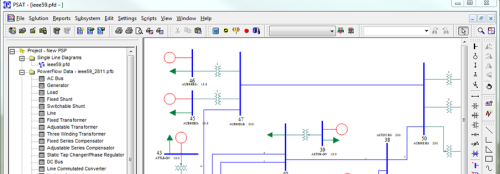
According to its official website, DSATools software has clients in many countries around the world, with a notable client in China being Southern Power Grid.
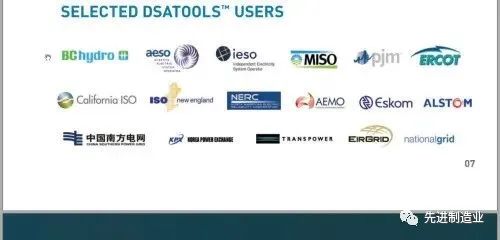
HYPERSIM
HYPERSIM is a simulation testing software and hardware for ultra-large power systems developed by the world-renowned power system simulation laboratory Hydro-Quebec.
HYPERSIM includes both hardware and software components; the system can perform offline simulations using workstations with single or multi-processor configurations, or real-time simulations using OPAL-RT’s OP5600 series simulation hosts. It can be applied in: controller testing, protection device testing, research on the interaction between HVDC and FACTS systems, etc.
Users can build grid models, configure component parameters, add measurement points, automate task allocation with MapTask, control the start and end of simulations, and adjust parameters online. HYPERSIM provides precise power flow analysis modules to establish steady-state conditions for power systems based on power/voltage reference values, and automatically initializes the power system. Advanced interpolation techniques enable users to accurately simulate valve triggers that occur between two time steps.
Below is the software interface of one of the HYPERSIM modules:

According to its official website, HYPERSIM is used in 40 countries worldwide, with clients in China including the China Electric Power Research Institute, Southern Power Grid, and NARI Technology.

RSCAD and Hardware RTDS NovaCor
Developed by RTDS Technologies in Winnipeg, Canada, as the first product in its class, the RTDS simulator is the global benchmark for executing real-time power system simulations. With clients in 44 countries worldwide, RTDS has become the undisputed global leader in power system simulation.
Application areas include microgrid simulation and testing, grid security, simulated distribution networks, power hardware in loop simulation, HVDC simulation, loop testing, traveling wave relay testing, synchrophasor measurement device (PMU) research, smart grids, and distributed generation.
Below is the software interface of RSCAD:
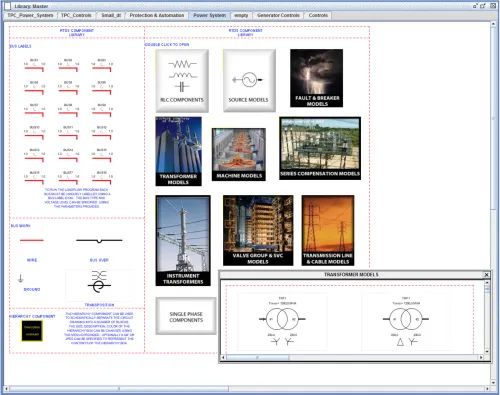
RTDS Hardware:
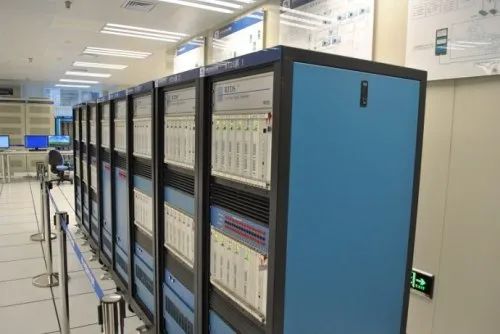
A notable client of RTDS in China is North China Electric Power University:
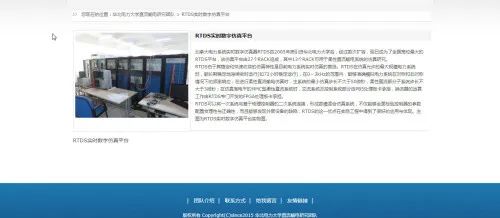
CMG Suite
One of the oil industry software developed in Canada is CMG Suite, located in Calgary, Alberta, and is the world’s largest independent developer of reservoir numerical simulation software. CMG Suite is a globally renowned modeling and simulation software for oil and gas reservoirs, considered the industry standard worldwide. By combining an easy-to-use model-building workflow, state-of-the-art performance enhancement technologies, and interdisciplinary multiphysics technologies, it simulates simple to advanced recovery processes (such as thermal effects, geochemistry, geomechanics, fluid, and phase behavior) to accurately simulate the recovery process.
Modules include:
Smart optimization and analysis tools, heavy oil and unconventional oil and gas reservoir simulators, reservoir and production system modeling, post-processor visualization and analysis, thermal effects and advanced process simulators, pre-processor simulation models and construction, fluid property characterization tools.
Below is the software interface of one of the CMG Suite modules:
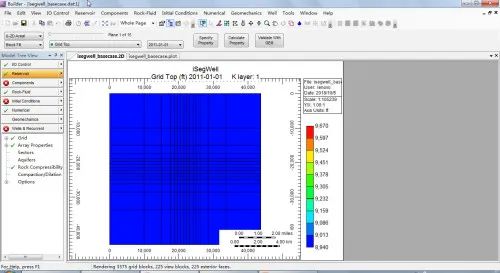
According to its official list of global clients:
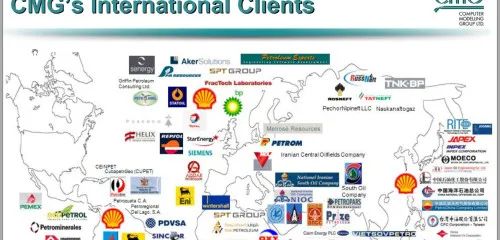
VMGSim
The development and application of process simulation software have now reached the fourth generation, with several well-known simulation software including ASPEN PLUS from the United States, PRO/II from France, HYSYS from Canada, and the newly launched fourth-generation simulation software VMGSim. ASPEN PLUS is mainly used in chemical engineering, PRO/II is used in refining, HYSYS is used in oil fields and natural gas processing, while the VMGSim developed by Virtual Materials Group (located in Calgary, Canada) perfectly integrates process calculations with equipment calculations in oil and gas processing as well as petrochemicals.
The new generation process simulation software VMGSim was developed by core technology personnel who developed HYSYS, using several of the latest technologies and programming tools in the world of process simulation. Its goal is to innovate and develop the original technology of HYSYS, ensuring that VMGSim inherits the excellent quality of HYSYS while improving its deficiencies and continuously developing new functions to meet the technological development needs of the oil and gas industry. After more than a decade of rapid development, this software has now become a leader in the process simulation industry.
Over the years, through cooperation with many world-class companies and technology alliances, the flagship product VMGSim has maintained a leading position in technology:
1. Alliance with NIST/TRC (National Institute of Standards and Technology/Thermophysical Properties Center)
2. Alliance with GPSA (Gas Processors Association)
3. Alliance with HTRI (Heat Transfer Research Institute)
4. Alliance with SRE (Sulfur Recovery Engineering Association)
5. Alliance with ETX Systems, enhancing VMGSim’s world-leading capabilities in heavy oil property calculations and heavy oil upgrading process calculations
6. Alliance with Schlumberger (OLGAS), ensuring the reliability of VMGSim’s pipeline calculations
7. Collaboration with Shell has greatly enhanced the precision of container depressurization simulation technology
8. Collaboration with Exxon-Mobil has made the property calculation technology for CO2 world-leading
9. Collaboration with Linde and Japan’s JGC has improved the reliability of process equipment calculations
After the release of VMGSim software, it first achieved success in the oil and gas industry, with its accuracy and ease of use widely praised in the industry, quickly becoming the upgraded product of HYSYS software. Currently, its successful applications in China mainly include property calculations for oil and gas wellheads (supercritical state), oil and gas gathering and blending, storage and transportation of heavy oil, prediction of natural gas hydrates and automatic calculation of inhibitor addition amounts, prediction calculations for evaporation losses of oil and gas tanks, natural gas triethylene glycol dehydration, calculations for crude oil stabilization processes, calculations for natural gas liquefaction processes, calculations for shallow and deep cooling separation of natural gas, calculations for acid gas reinjection, calculations for natural gas desulfurization and de-CO2 processes, calculations for sulfur recovery and tail gas treatment processes, calculations for depressurization of pipelines and containers, and long-distance pipeline calculations for supercritical CO2.

QNX is a famous real-time microkernel operating system developed by QNX Software Systems in Canada (originating from the University of Waterloo, now located in Ottawa), first developed in 1982. This system has very powerful safety reliability and operational efficiency; it is a true microkernel operating system. In the QNX system, every driver, application, protocol stack, and file system runs outside the kernel in a secure user space that provides memory protection. Fault tolerance is built-in. Therefore, almost any component can be automatically restarted after an error without affecting other components or the kernel. Moreover, it is very convenient to develop and use; QNX also provides Momentics development tools, which offer pre-defined options. It enables coding in C, C++, or embedded C++ and can develop on Windows, Linux, Solaris, or QNX Neutrino Real-Time Operating System (RTOS); it supports ARM, MIPS, PowerPC, SH-4, StrongARM, XScale, or x86 processors as target machines, all using the same IDE. It even allows working with mixed languages and processor architectures. From start to finish, QNX Momentics simplifies the product lifecycle.
This system is widely used in Canadian CANDU nuclear reactors, American Westinghouse nuclear reactors, Cisco high-end routers, a large number of rail transit devices, and many automotive onboard platforms, thus holding a monopoly in the global automotive platform field.
Figure one shows the car brands that use the QNX operating system:

Figure two shows the structure of the QNX operating system:
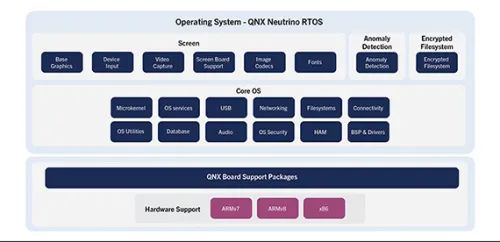
Geosoft is a series of earth science software developed by Geosoft Inc. in Toronto, Canada. The industrial application areas of Oasis montaj include:
-
Mineral exploration
-
Government geological surveys
-
Oil and gas exploration
-
UXO (Unexploded Ordnance) detection
-
Environmental studies
-
Education
Modules include:
Geophysical data processing and analysis, geochemistry, borehole mapping, aerial survey quality control, unexploded ordnance UX detection, basement depth calculation, geophysical horizontal correction, gravity and terrain correction, grid stitching, gravity magnetic interpretation, GM-SYS profile simulation, GMSYS three-dimensional simulation, induced polarization, balanced residual, MAGMAP filtering, and 256-channel radioactive data processing.
Clients include many renowned companies worldwide, such as Areva, Vale, Teck Resources, and Rio Tinto. Applications are found in various countries, including the United States, Canada, Norway, Laos, and more.
PCI Geomatica is a world-renowned remote sensing, digital photogrammetry, image analysis, and mapping system developed by PCI Geomatics in Ontario, Canada. It has a history of over 30 years. Geomatica has been used by many educational institutions and scientific programs worldwide for analyzing satellite images, such as Canada’s GlobeSAR program. Other similar software from different countries includes Sweden’s Erdas Imagine, the United States’ Envi, and the United Kingdom’s SocetSet.
Geomatica can be used not only for processing satellite and aerial remote sensing images but also for geophysical data images, medical images, radar data images, and optical images. Its application areas are extensive, including oil and gas exploration, mineral resource exploration, forestry, agriculture, land resource survey assessment and management, natural disaster dynamic monitoring, surveying, environmental protection, urban planning, railway traffic, large-scale pipeline engineering design, desertification control, engineering construction, meteorological forecasting, medical X-ray analysis, spectral analysis, radar data analysis, and more.
Over 2700 educational institutions globally use Geomatica as part of their remote sensing courses; below are some universities:
-
University of Calgary, Geographic Information Engineering
-
University of New Brunswick
-
Fleming College, Lindsay, Ontario, Canada
-
Carleton University, Ottawa, Canada
-
University of Waterloo, Waterloo, Canada
-
British Columbia Institute of Technology (BCIT)
-
Université du Québec à Montréal
-
Aalto University, Institute of Photogrammetry and Remote Sensing
-
Northeastern University, Boston, USA
-
University of Arkansas, USA
-
University of Victoria, BC, Canada
Below is the software interface of one of the PCI Geomatica modules:

CARIS is a well-known marine survey software development company in Canada. From raw bathymetric data acquisition to chart production, CARIS is the only company that provides a complete set of process-oriented geographic information solutions.
Main products of CARIS include:
1. CARIS HIPS and SIPS Professional: the most comprehensive marine survey data processing software.
This single software provides an all-encompassing data processing solution from the ocean surface to the seabed, including multibeam MBES, single beam SBES, LiDAR data, side-scan sonar images (SSS), and water column imagery.
2. CARIS Bathy DataBASE (BDB): the most advanced and reliable software for managing various massive bathymetric data.
BDB can easily import multibeam, single beam, and LiDAR data, including historical bathymetric data acquired from CARIS systems or other third-party software, using advanced database management technology for storage, providing a seamless, efficient, and professional integrated management system for data verification, comprehensive analysis, and product creation. BDB includes:
-
BASE Editor: Bathymetric data analysis management desktop system (standalone version)
-
Engineering Analysis Module (EAM): for seabed dredging engineering analysis module
-
Limits and Boundary Module (LBM): for marine boundary calculation and spatial planning module
-
Bathy DataBASE Server: managing bathymetric database server
3. CARIS LOTS: accurately defining marine boundaries and limited optimal GIS solutions
-
LOTS Limits and Boundary: a geodetic tool integrating marine boundary definition, analysis, and calculation
-
LOTS Article 76: an optimized solution for marine territory declaration
4. CARIS Hydrographic Production Database (HPD): enterprise-level nautical chart database management solution
-
HPD Server: HPD database server management
-
HPD Source Editor: creating and editing source data
-
HPD Product Editor: creating S-57 ENC, IENC, AML, and GML products
-
HPD Paper Chart Editor: creating paper nautical charts based on IHO INT1 and INT2 and various custom paper charts
5. CARIS S-57 Composer: next-generation electronic nautical chart (ENC) production desktop system (standalone version)
6. CARIS Paper Chart Composer: next-generation paper nautical chart production desktop system (standalone version)
7. CARIS Spatial Fusion Enterprise (SFE): high-precision integrated network publishing solution for bathymetric data and nautical chart products
Below is the software interface of one of the CARIS modules:
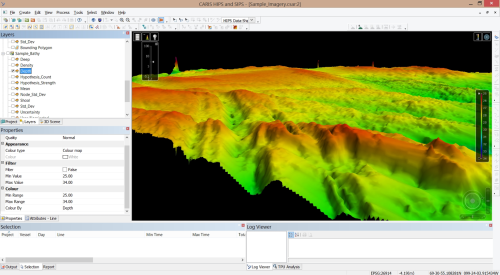
Solido Design is an EDA software developed by Solido Design Automation in Canada (headquartered in Saskatoon), used for variation-aware design of memory, analog/RF, and standard cells.
-
Setting standards for semiconductor variation-aware design
-
Comprehensive design coverage reduces the number of simulations by orders of magnitude while maintaining strong accuracy
-
Improving design performance, power, and yield
-
Used by over 40 major semiconductor companies
-
Validated in customer and production environments
-
Compatible with any EDA design flow
-
Supported by machine learning technology
The PVTMC validator of Solido Design uses machine learning technology to validate designs across the range of process variations and operating conditions, enabling users to shorten design cycles, produce more competitive chips, and prevent chip failures.
For design applications such as automotive, mobile, high-performance computing, and the Internet of Things (IoT), it is essential to comprehensively validate the variability of all possible operating and process conditions to reduce the risk of re-tuning. Since process variations and operating conditions frequently interact at advanced process nodes, simulating them independently can lead to missing critical interaction effects and failures.
Crosslight was founded in 1993 by Dr. ZM Simon Li and is a spin-off of the National Research Council of Canada (NRC), located in Vancouver. It includes the following software:
1. APSYS – Advanced semiconductor device physics modeling simulation software, capable of performing 2D/3D finite element analysis for the electrical, optical, and thermal characteristics of compound semiconductors, with silicon devices as one example, focusing on band structure and quantum mechanical effects, and covering various optical modules, making this simulation software convenient for simulating photosensitive or light-emitting devices.
2. LASTIP – Laser simulation software, the first product launched by Crosslight, primarily used for 2D simulation of edge-emitting lasers, achieving results comparable to mature industry standards using TCAD techniques, including optical gain models for quantum wells, quantum wires, and quantum dots with different spectral broadening, electronic interactions, and kp non-parabolic subband simulations.
3. PICS3D – 3D optoelectronic integrated circuit simulation software, a latest 3D simulation software for simulating surface-emitting and edge-emitting laser diodes, semiconductor optical amplifiers, and other similar active waveguide devices, pairing 2D and 3D semiconductor equations (e.g., drift-diffusion, Poisson equations, etc.) with various optical models in lateral and longitudinal directions, optimizing calculations for optical characteristics such as quantum wells, quantum wires, and quantum dots’ optical gain and self-emission rates.
4. PROCOM (PROcesses of COMpounds) a simulation software providing 2D and 3D simulations, allowing users to observe the growth of semiconductor films under common metal-organic chemical vapor deposition (MOCVD) conditions. Given the known geometric shape of the deposition reactor, types of chemicals, and growth environment parameters, PROCOM can predict the growth rates, compositions, thickness consistency, impurity diffusion rates, and defect distributions of semiconductor films based on detailed chemical dynamics, mass, and thermal conduction models.
Crosslight software holds significant importance in academia; below are some publications utilizing Crosslight software.
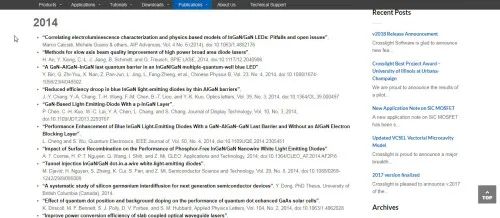
Two major geotechnical engineering software from Canada are used worldwide; below is a brief introduction to each.
GeoStudio
GeoStudio is a powerful geotechnical engineering and geotechnical environmental simulation software, developed by GEOSLOPE Company located in Calgary, Canada. This software series is used by small engineering firms, large multinational corporations, government agencies, regulatory bodies, and universities in over 100 countries. Since its introduction to China, it has been widely used in many major design institutes and universities.
Application areas include:
-
Stability and support of slopes, including soil and rock slopes, slope excavation, embankments, anchors, soil nails, and geotextiles.
-
Limit equilibrium method, limit equilibrium combined with finite element analysis, and finite element strength reduction method for analyzing slope safety factors.
-
Finite element steady-state/transient seepage analysis, including pit drainage, cutoff walls; dam seepage, seepage forces, seepage failure, section flow rates, geotextiles, and the influence of drainage ditches and injection wells on seepage.
-
Seepage analysis under transient conditions such as rainfall, dam storage, and sudden water level drops, while considering stability issues under these conditions.
-
Deformation caused by incremental loading, excavation, backfilling, support design, evaluation of support systems such as piles, anchors, and retaining walls, considering structural-soil interaction, deformation calculations, and construction step designs.
-
Ground treatment, drainage consolidation method for soft foundation, consolidation degree calculations, settlement control, drainage board settings, and analysis of ground deformation and failure under different conditions.
-
Deformation caused by earthquakes, generation and dissipation of excess pore water pressure, soil liquefaction analysis during earthquakes, structural stability analysis during earthquakes, and permanent deformation analysis during earthquakes.
-
Impact of urban landfills, tailings under rainfall and groundwater seepage on the surrounding environment, salinization of coastal areas, and the migration of pollutants such as chemical pesticides.
-
Frozen construction methods, geothermal heat pump heat conduction, and transient freeze-thaw problems
-
Unsaturated soil mechanics characteristics
-
Impact of surface environment (temperature, vegetation, precipitation, etc.) on groundwater seepage
Includes the following modules:
-
SLOPE/W – the preferred stability analysis software in the global geotechnical engineering community
-
SEEP/W – the first software to comprehensively address unsaturated soil seepage issues
-
SIGMA/W – a specialized finite element software based entirely on soil (rock) constitutive relationships
-
QUAKE/W – software for dynamic response analysis of linear and nonlinear soils in both horizontal and vertical directions
-
TEMP/W – specialized software for underground heat transfer analysis
-
CTRAN/W – specialized software for pollutant migration analysis
-
AIR/W – software for analyzing water-gas interactions in unsaturated zones
-
VADOSE/W – specialized software for comprehensive seepage evaporation zone analysis and soil surface analysis
Below is the software interface of one of the GeoStudio modules:
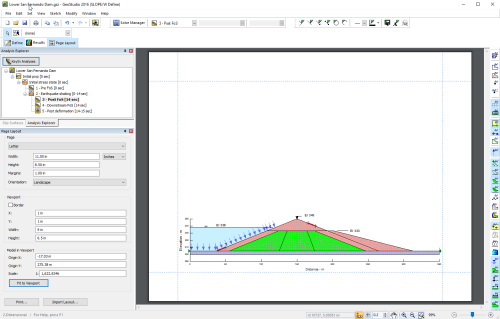
Rocscience
Developed by Rocscience Inc. in Canada since 1996, this professional geotechnical engineering analysis software is supported by theories from the internationally renowned rock mechanics master E. Hoek, and its built-in rock mass constitutive models and analysis of rock mass failure modes are uniquely innovative. This software features fast and accurate analysis of geotechnical structures, is easy to learn, and saves design costs; it greatly reduces users’ calculation processes and improves design analysis results.
Since 1987, the rock engineering group at the University of Toronto has developed geomechanics software to meet the demand for more reliable and user-friendly 2D and 3D analysis and design tools in the mining and civil engineering industries. Under the leadership of Dr. Evert Hoek and Dr. John Curran, the first set of software courses has evolved from various research works over the years. The preliminary plans were partially supported by the Canadian mining industry and provincial and federal governments.
Rocscience was established in 1996 as a spin-off from the University of Toronto. Today, Rocscience software is used by over 7000 clients and 280 universities in more than 120 countries worldwide.
The Rocscience series of software is broadly categorized into three categories: slope stability analysis software, excavation support analysis software, and a series of geotechnical tools comprising a total of 16 modules.
-
RS3 – Three-dimensional finite element geotechnical engineering analysis
-
Slide – Two-dimensional slope stability analysis
-
Slide3 – Three-dimensional limit equilibrium slope stability analysis
-
Dips – Geometric and statistical analysis of geological data
-
Unwedge – Three-dimensional wedge stability analysis for underground excavations
-
Phase2 – Finite element analysis of excavations and slopes
-
RocSupport – Evaluation of soft rock tunnel support
-
Examine3D – Three-dimensional boundary element method analysis for underground rock masses
-
Settle3D – Three-dimensional consolidation settlement analysis software
-
Swedge – Stability analysis of rock slopes with wedges
-
RocTopple – Analysis of rock slope overturning and support design
-
RocFall – Statistical analysis of rockfall on steep rock slopes
-
RocPlane – Stability analysis of planar sliding of rock slopes
-
RocData – Analysis of geotechnical discontinuity strength
-
CPillar – Three-dimensional stability analysis for top pillars
-
RSPile – Axial load analysis and lateral load analysis for driven piles
Below is the software interface of one of the Rocscience modules:
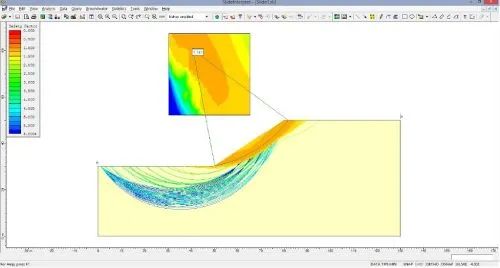
The article lists only a portion; what other Canadian industrial software do you know? Feel free to leave a comment and share~